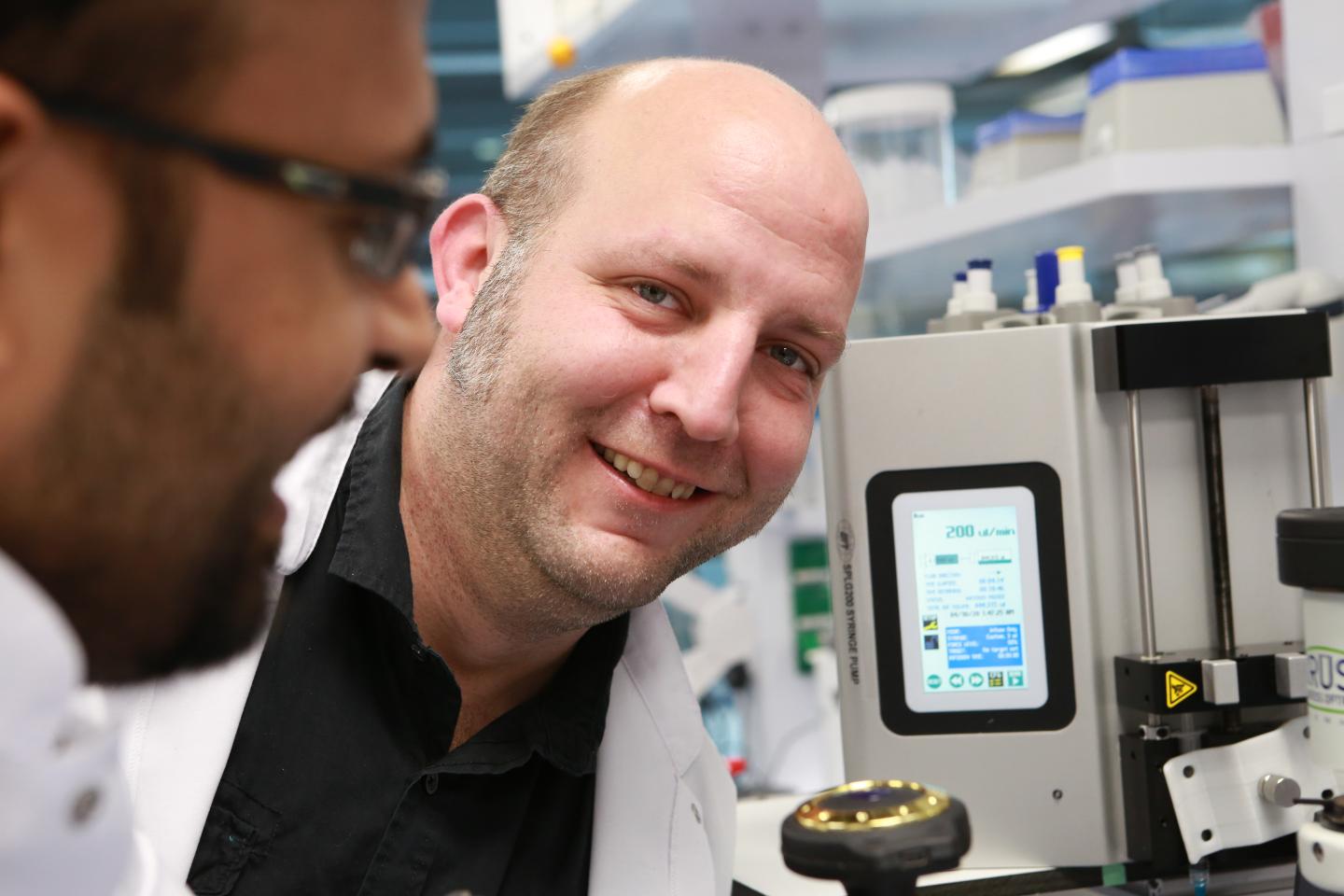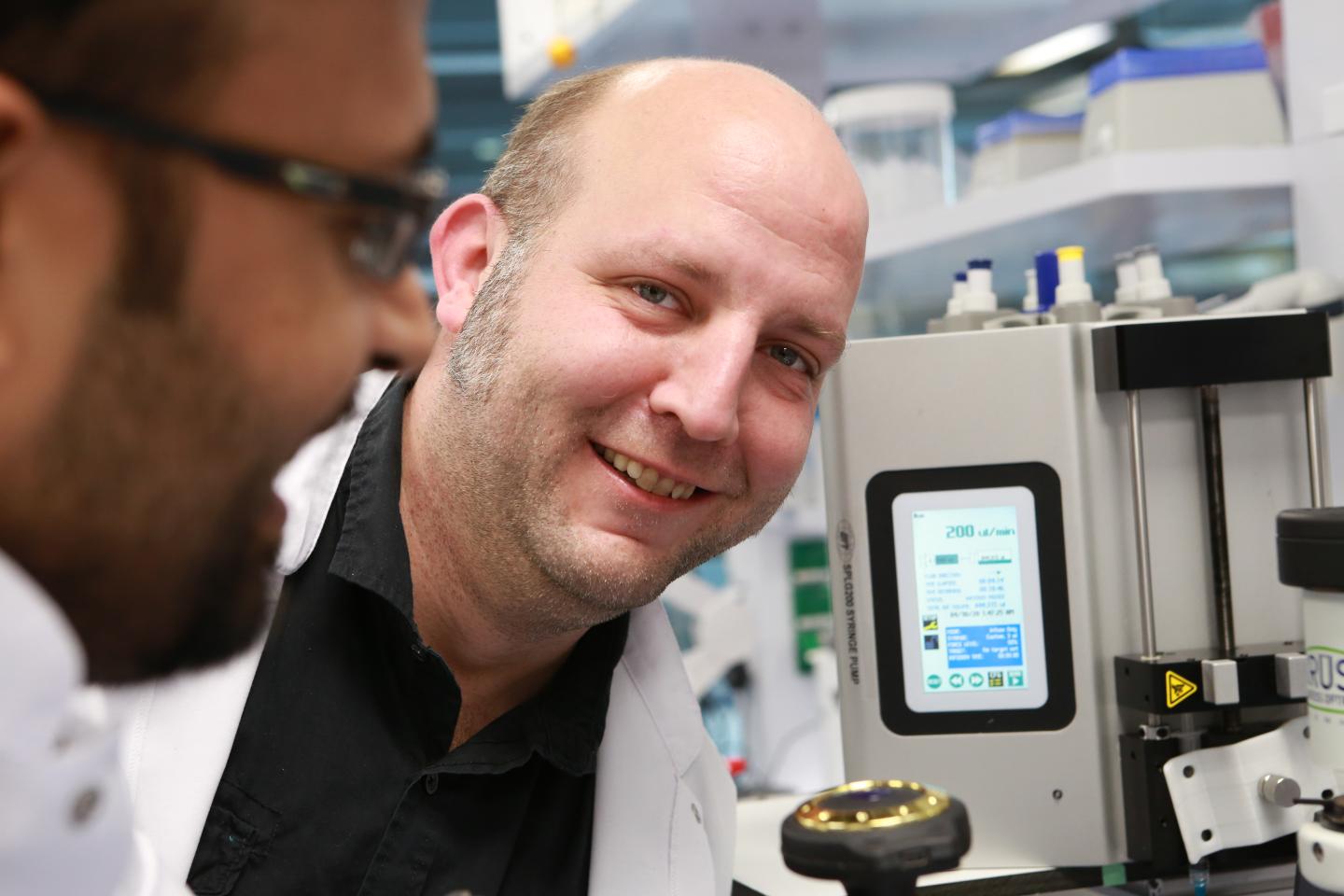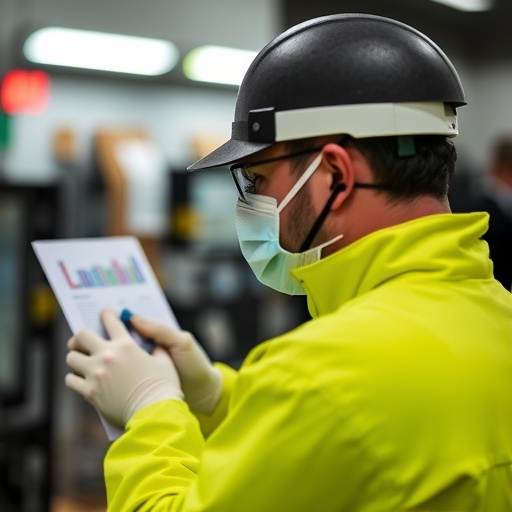
Credit: ScienceRelations
Stem cells are unspecialised cells that can develop into any type of cell in the human body. So far, however, scientists only partially understand how the body controls the fate of these all-rounders, and what factors decide whether a stem cell will differentiate, for example, into a blood, liver or nerve cell. Researchers from the Luxembourg Centre for Systems Biomedicine (LCSB) of the University of Luxembourg and an international team have now identified an ingenious mechanism by which the body orchestrates the regeneration of red and white blood cells from progenitor cells. "This finding can help us to improve stem cell therapy in future," says Dr. Alexander Skupin, head of the "Integrative Cell Signalling" group of LCSB. The LCSB team has published its results in the scientific journal PLOS Biology (DOI:10.1371/journal.pbio.2000640).
Although all cells in an organism carry the same genetic blueprints — the same DNA — some of them act as blood or bone cells, for example, while others function as nerve or skin cells. Researchers already understand quite well how individual cells work. But how an organism is able to create such a diversity of cells from the same genetic template and how it manages to relocate them to wherever they are needed in the body is still largely unknown.
In order to learn more about this process, Alexander Skupin and his team treated blood stem cells from mice with growth hormones and then watched closely how these progenitor cells behaved during their differentiation into white or red blood cells. The researchers observed that the cells' transformation does not occur in linear, targeted fashion, but rather more opportunistically. Each progenitor cell adapts to the needs of its environment and integrates itself into the body where new cells are needed. "So, it is not as though the cell takes a ticket at the beginning of its differentiation and then travels straight to its destination. Rather, it gets off frequently to look around and see which line is best to take," Alexander Skupin explains. By this clever mechanism, a multicellular organism can adapt the regrowth of new cells to its current needs. "Before progenitor cells differentiate once and for all, they first lose their stem cell character and then check, as it were, which cell line is currently in demand. Only then do they develop into the cell type that best suits their characteristics and which prevails in their environment," Alexander Skupin says.
The researcher likens this step to a game of roulette, where the different types of cells can be thought of as the differently numbered slots in the roulette wheel that catch the ball. "When the cells lose their stem cell character, they are quasi thrown into the roulette wheel, where they first bounce around aimlessly. Only when they have found the right environment do the cells then drop into that niche – like the roulette ball falling into a numbered slot – and differentiate definitively." This way, the body can orchestrate its cell regeneration and at the same time prevent stem cells from being misdirected too early. "Even if a cell takes a wrong turn, it is ultimately sorted out again if its characteristics are unsuitable for the niche, or slot, it has landed in," says Skupin.
With their study, Alexander Skupin and his team have shown for the first time that a progenitor cell's fate is not clearly predetermined and does not follow a straight line. "This observation contradicts the current doctrine that stem cells are programmed to follow a certain lineage from the beginning," Alexander Skupin says. The researcher is furthermore convinced that the processes are similar for other progenitor cells. "In the lab, we have observed the same differentiation pattern in so-called iPS cells, or induced pluripotent stem cells, which can transform into many different types of cells."
This knowledge can help the researchers to improve the effectiveness of therapies in future. Stem cell therapy involves administering a patient his or her own body's stem cells in order to replace other cells that have died as a result of an affliction such as Parkinson's disease. While this promising treatment method has been intensively researched over many years, there has so far been only limited practical success in endogenous stem cell therapy. It is also highly controversial, since it is frequently accompanied by severe side effects and it cannot be ruled out that some cells might degenerate and lead to cancer. "Because we now have a better understanding of how the body influences the direction in which stem cells differentiate, we can hopefully control this process better in future," Alexander Skupin concludes.
###
Media Contact
Thomas Klein
[email protected]
352-466-644-5148
@uni_lu
http://www.uni.lu
############
Story Source: Materials provided by Scienmag





